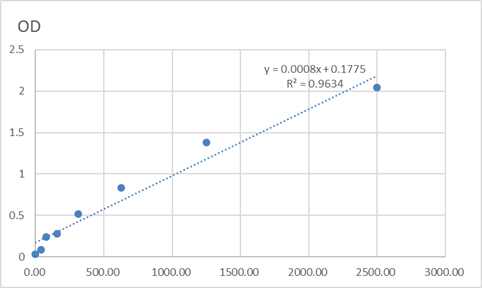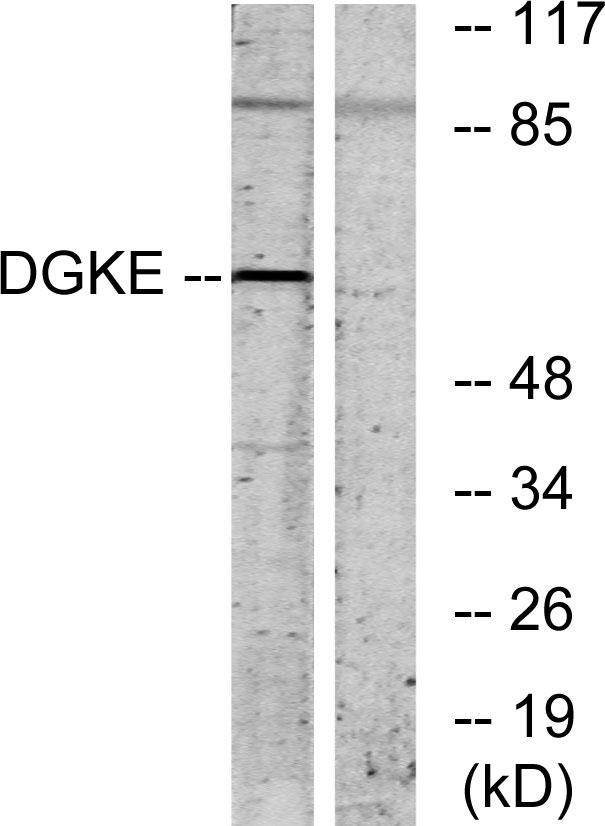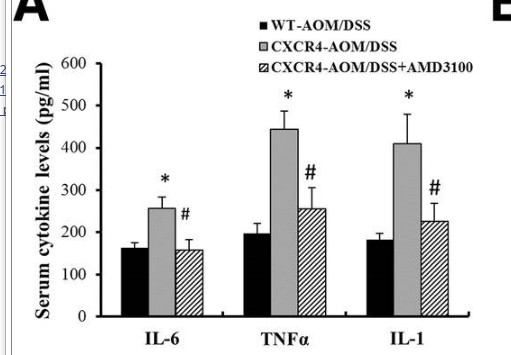Total DGK-ε Cell-Based Colorimetric ELISA Kit
- Catalog No.:KA3631C
- Applications:ELISA
- Reactivity:Human;Mouse;Rat
- Gene Name:
- DGKE
- Human Gene Id:
- 8526
- Human Swiss Prot No:
- P52429
- Mouse Swiss Prot No:
- Q9R1C6
- Storage Stability:
- 2-8°C/6 months
- Other Name:
- Diacylglycerol kinase epsilon (DAG kinase epsilon) (EC 2.7.1.107) (Diglyceride kinase epsilon) (DGK-epsilon)
- Detection Method:
- Colorimetric
- Background:
- catalytic activity:ATP + 1,2-diacylglycerol = ADP + 1,2-diacyl-sn-glycerol 3-phosphate.,function:Highly selective for arachidonate-containing species of diacylglycerol (DAG). May terminate signals transmitted through arachidonoyl-DAG or may contribute to the synthesis of phospholipids with defined fatty acid composition.,similarity:Belongs to the eukaryotic diacylglycerol kinase family.,similarity:Contains 1 DAGKc domain.,similarity:Contains 2 phorbol-ester/DAG-type zinc fingers.,tissue specificity:Expressed predominantly in testis.,
- Function:
- phospholipid metabolic process, cell surface receptor linked signal transduction, G-protein coupled receptor protein signaling pathway, activation of protein kinase C activity by G-protein coupled receptor protein signaling pathway,intracellular signaling cascade, lipid biosynthetic process, phospholipid biosynthetic process, regulation of phosphate metabolic process, organophosphate metabolic process, activation of protein kinase activity, positive regulation of kinase activity, regulation of phosphorylation, positive regulation of catalytic activity, regulation of kinase activity,positive regulation of molecular function, regulation of protein kinase activity, positive regulation of protein kinase activity, regulation of phosphorus metabolic process, regulation of transferase activity, positive regulation of transferase activity,
- Subcellular Location:
- Membrane ; Single-pass membrane protein . Cytoplasm .
- Expression:
- Expressed predominantly in testis. Expressed in endothelium, platelets and podocytes (at protein level).
- June 19-2018
- WESTERN IMMUNOBLOTTING PROTOCOL
- June 19-2018
- IMMUNOHISTOCHEMISTRY-PARAFFIN PROTOCOL
- June 19-2018
- IMMUNOFLUORESCENCE PROTOCOL
- September 08-2020
- FLOW-CYTOMEYRT-PROTOCOL
- May 20-2022
- Cell-Based ELISA│解您多样本WB检测之困扰
- July 13-2018
- CELL-BASED-ELISA-PROTOCOL-FOR-ACETYL-PROTEIN
- July 13-2018
- CELL-BASED-ELISA-PROTOCOL-FOR-PHOSPHO-PROTEIN
- July 13-2018
- Antibody-FAQs



